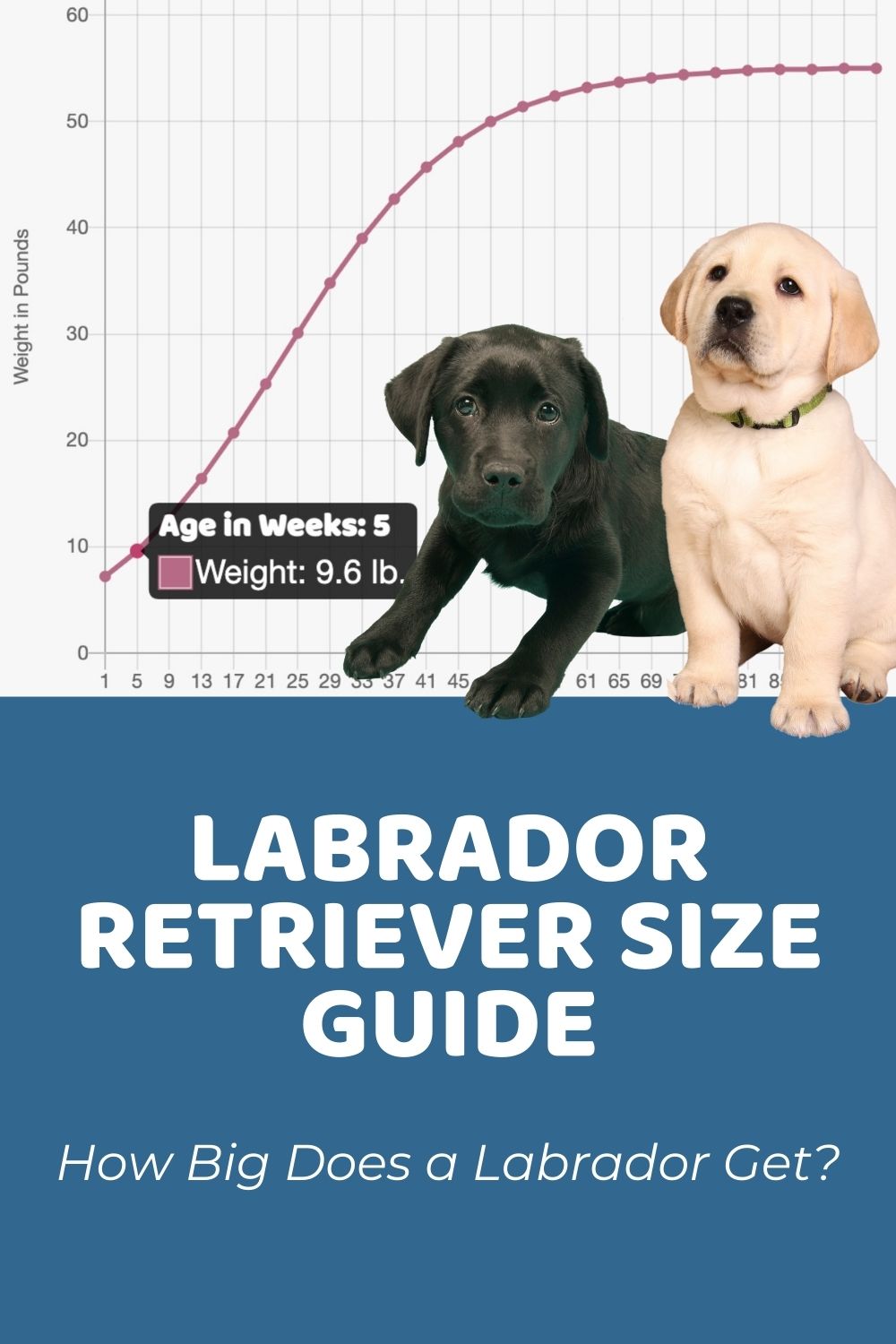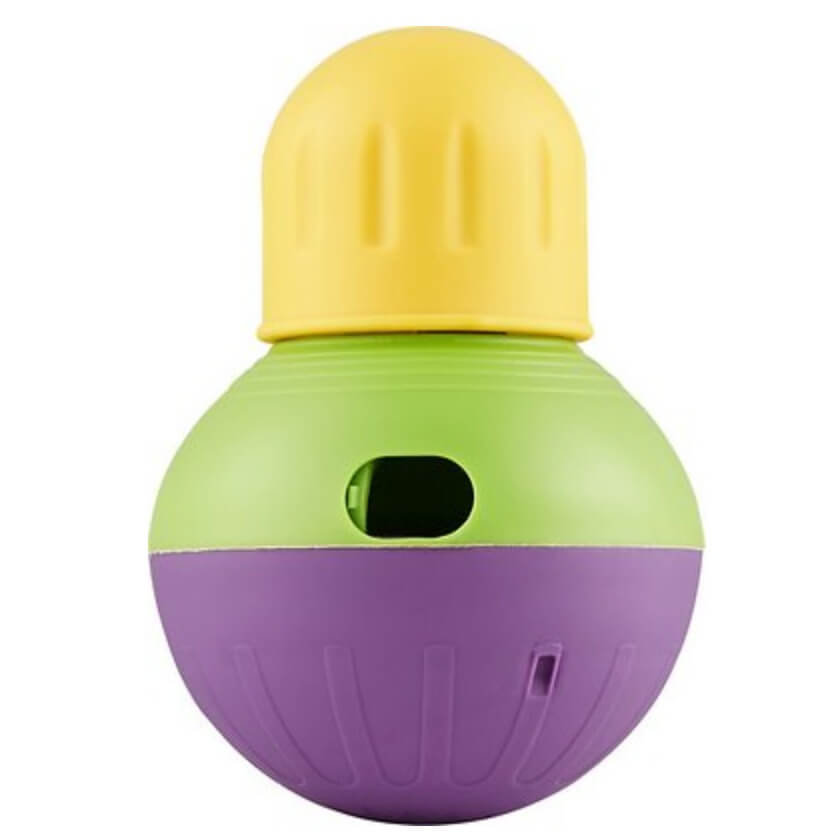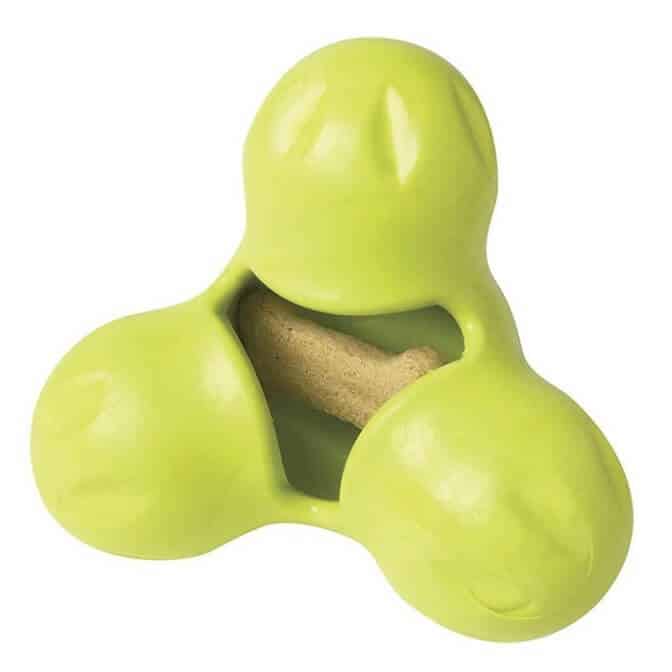
Thinking of adding a new member to the family? Got your heart set on a lovable Lab? If you haven’t got all that much experience with dogs, you may have a few questions first. Probably one of the biggest ones will be about size – you may be wondering just how big a Labrador can get. In this Labrador Retriever Size Guide, calculate how big your Lab will be as an adult.

Luckily, as a pure breed, we have plenty of information on these excellent dogs. Although, as you well know, every dog is different. However, we can make some pretty accurate guesstimations about your pup’s future size based on their current height and weight with our interactive puppy growth chart and calculator.
Psst! Check Out These Awesome Puppy Things!
Labrador Size Predictions by Age
Friendly, playful, and outgoing, it’s easy to see why Labrador Retrievers have held the top spot as the nation’s most popular purebred dog for a record breaking 29 years! These beautiful babies make the perfect pets for active singles, couples, and families alike.
However, Labs are certainly no lapdogs. The American Kennel Club categorizes them as a sporting breed, placing them in the medium-size dog category. Although their rambunctious nature, especially when they are young, can often make them feel that much bigger.

Having an idea of how big your dog will likely be as an adult is essential for planning their future daily care. It allows you to ensure there is enough space for them in your home, anticipate how much exercise they are going to require, and estimate future food costs.
Data gathered by examining the growth patterns of hundreds of pups gives us the following information on the average weight and height of Labrador Retrievers at key stages of growth.
| Age | 3 months | 6 months | 1 year | Adult |
| Weight | 20lbs | 45lbs | 60lbs | 55-80 lbs |
| Height | 15 inches | 20 inches | 23.5 inches | 21.5-24.5 inches |
Keep in mind that a dog’s height is not measured from the top of its head but from its withers. This is the point between their shoulder blades.
Labs reach size maturity relatively early compared to other large breeds. They will likely attain their adult height somewhere around the 9-month mark, although realistically this could occur anywhere between 6 months and a year.
After that, they will likely continue to fill out, so you could see their weight continue to increase anywhere up until their second birthday. Keep an eye on this, though, as Labs have a much-deserved reputation for chowing down on anything and everything you put in front of them – whether it’s edible or not!
Are There Different Sizes of Labrador?
There is only one official size of Labrador. However, while expert sources such as The American Kennel Club can provide outlines, as listed above, on what size the breed generally is, what they obviously can’t do is provide you with specific information on your pup.
In truth, several factors can contribute to your Lab’s adult size. For starters, something that many people don’t know is that there are, in fact, two distinct types of Labrador Retriever – English ones and American ones. The differences between the two are because of decades of specialized breeding.
English Labs were bred for showing and tend to be shorter, stockier, and on the heavy side. In contrast, American Labs were working dogs, bred for enhanced speed and agility, and for this reason can be somewhat taller, slimmer, and more athletic than their British counterparts (not to mention more energetic and highly-strung).
Beyond that, the sex of your dog can have an impact. Female Labs tend to be slightly shorter at 21.5-23.5 inches to males’ 22.5-24.5 inches. They may also weigh slightly less, between 55-70 pounds compared to 65-80 pounds. Not a significant difference granted, but a difference, nonetheless.
Labrador Size Charts & Growth Patterns
As with most dog breeds, Labrador Retrievers have their most significant growth period in the first 4-8 months of their lives. At this time, they will get to around 50% of their adult weight.

As mentioned above, when Labs get to their adult size (at around 9 months), they will likely continue to grow outwards as their muscles develop. This means their weight will keep going up for a while. Our interactive puppy growth chart and calculator has more information on that.
Additionally, this is why it’s particularly important that your Lab puppy gets the correct nourishment he needs to grow that adorable little body into a healthy adult one. Check out these guides on best dog food for puppies here.
How Big is a Full-Grown Labrador?
As can be seen in the table above, a full-grown Labrador Retriever is somewhere between 21.5 and 24.5 inches and will weigh around 50-80 lbs, depending on variations in their breed type and sex.
Labradors usually get to half their full weight between 4.5 and 6 months, and their adult weight between 12.5-16 months.
You can calculate their potential adult weight at 23 weeks by taking what they weigh at that age and multiplying it by two.
A different formula you could use is:
- Growth = current weight / current age in weeks
- Adult weight = Growth x 52 (number of weeks in one year)
So, for example, if your 12-week old pup weighs 18 pounds. You simply divide the current weight by their age in weeks and multiply the result with 52:
18/ 12 = 1.5
1.5 x 52= 78 pounds
78 pounds would be the expected weight of your adult-sized Labrador Retriever.
How Much Do Labs Grow After 6 Months?
By six months old, your Labrador has likely achieved around two-thirds of their adult weight. At this time, usually weighing at least double what they did four months ago, they will be reaching the end of their rapid growth period.
The remainder of the growing that they do will be at a steadier pace and will likely stretch across the next six months, if not longer. While your Lab may seem big and adult in appearance at this age, keep in mind that they are still a puppy in many ways.

Those of you considering a pedigree breed, such as the Labrador Retriever, over hybrid dogs like Doodles will be relieved to hear that making predictions about their adult size is a much simpler business. However, there can still be considerable variations in the adult size and weight of perfectly healthy Labs.
Hopefully, the information provided here proves usual in helping you to understand precisely what you are likely to be dealing with in terms of the height and weight of your pup a couple of years down the line.
Pin It!








